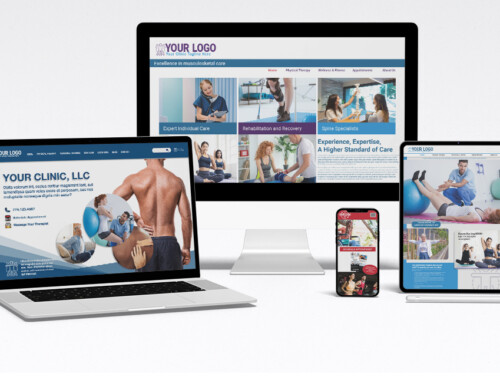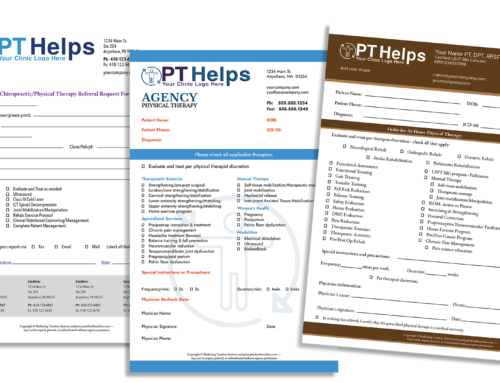You may be the best trained and most competent practitioner in your marketplace, but for some reason that hasn’t translated into the kind of business success you may feel you deserve. You may be doing fine, but want to move your practice to the next level; or maybe you’re struggling a bit, and looking for solutions. Either way, no matter where you are in your business development, could there be anything more frustrating than to watch other practitioners get the referrals you feel better equipped to handle? If that’s you, then maybe it’s time to look at your business communications system…
You see, all your prospective patients and referral sources want to make the best decision possible for choosing care. The problem is they may not perceive that you are any different than the next therapist. That’s because your prospects just don’t have the time to sort and sift through all the options, or even know what to ask. Nevertheless, they ALL have an innate need to know how to make the best decision possible. No matter who they are, be they physicians or prospective patients, they DO want answers to two questions; 1) What are all the assessment and treatment options, and 2) How do they select the BEST care provider? Isn’t that a conversation you are DYING to have as well?
The process for facilitating this conversation is called marketing – but not just any marketing. The marketing must be educational, chock-full of decision facilitating information, easy to access, and easy to understand.
So here are some simple action items to begin the process for setting up your practice to be a communications powerhouse:
- Gather ALL your marketing materials, including letters, emails, educational packets, receptionist scripts, follow up materials, on hold messaging, and advertisements. Don’t take a shortcut and just grab one document. This exercise helps you take inventory of what you have and what you say at all points of contact. If you haven’t already, start a binder to keep these important pieces of your marketing system in one place.
- Review each piece, and highlight all the platitudes. For our purposes here, platitudes are words or phrases that are common place and predictable. Things like “best care”, “best training”, “most experience”, “experienced staff”, “latest technology”, and any other claim that lacks power to evoke interest due to overuse or repetition. If you’re not sure if it’s a platitude, just ask yourself this – isn’t that what all my competitors say as well? If the answer is yes, then chances are, it’s a PLATITUDE, and your prospects can’t use that to facilitate a decision as to why you are any better or any different than the next PT.
- Do some competitive intelligence, and see what your competitors are saying in their marketing. Gather their stuff. If you were a prospect, how would you respond to their material? Is it helpful in educating, or does it leave you with your eyes glazed over? This exercise establishes the “marketing writing level” you need exceed to become more competitive. At this point, you should begin formulating ideas on how you can be a better communicator in your marketing.
- List and quantify as best you can all the options that your prospects may be considering. For example, if treating spinal disorders is your business priority, list out all the options a prospect may consider. With lower back pain, you have many options such as chiropractic, simple exercise, physical therapy, do nothing and wait for it to go away, etc… Now, try and quantify all the options. Think of any statistics, charts, graphs, research, professional anecdotes, or other “evidence” that help you educate prospects about choices and probable outcomes. This information will give you what you need to replace the platitudes with meaningful, decision facilitating content that positions you as the expert as well as the obvious choice.
- Write down your “advice to a friend” for assessment, treatment, and provider selection. Using the information you have gathered, tell a story as if you were giving advice to a friend. Just close your eyes, imagine a good friend has come to you with a problem, and wants your advice. Your advice should empower them to feel confident they have enough information to choose the best solution possible based on expert knowledge – not platitudes! What would you say? Record it, write it, scribble it with crayon, do whatever is easiest for you to CAPTURE your valuable perspective.
- Transform your advice into a powerful marketing system. Believe it or not, if you’ve gotten this far, you have the raw stuff for ALL your marketing content. Depending on your copy writing and design skill level, you may be able to produce final concepts, but chances are, this is where you may need professional marketing help.Looking for some input? Send any comments, questions, or marketing materials you would like critiqued to info@PTreferralMachine.com .








Leave A Comment
You must be logged in to post a comment.